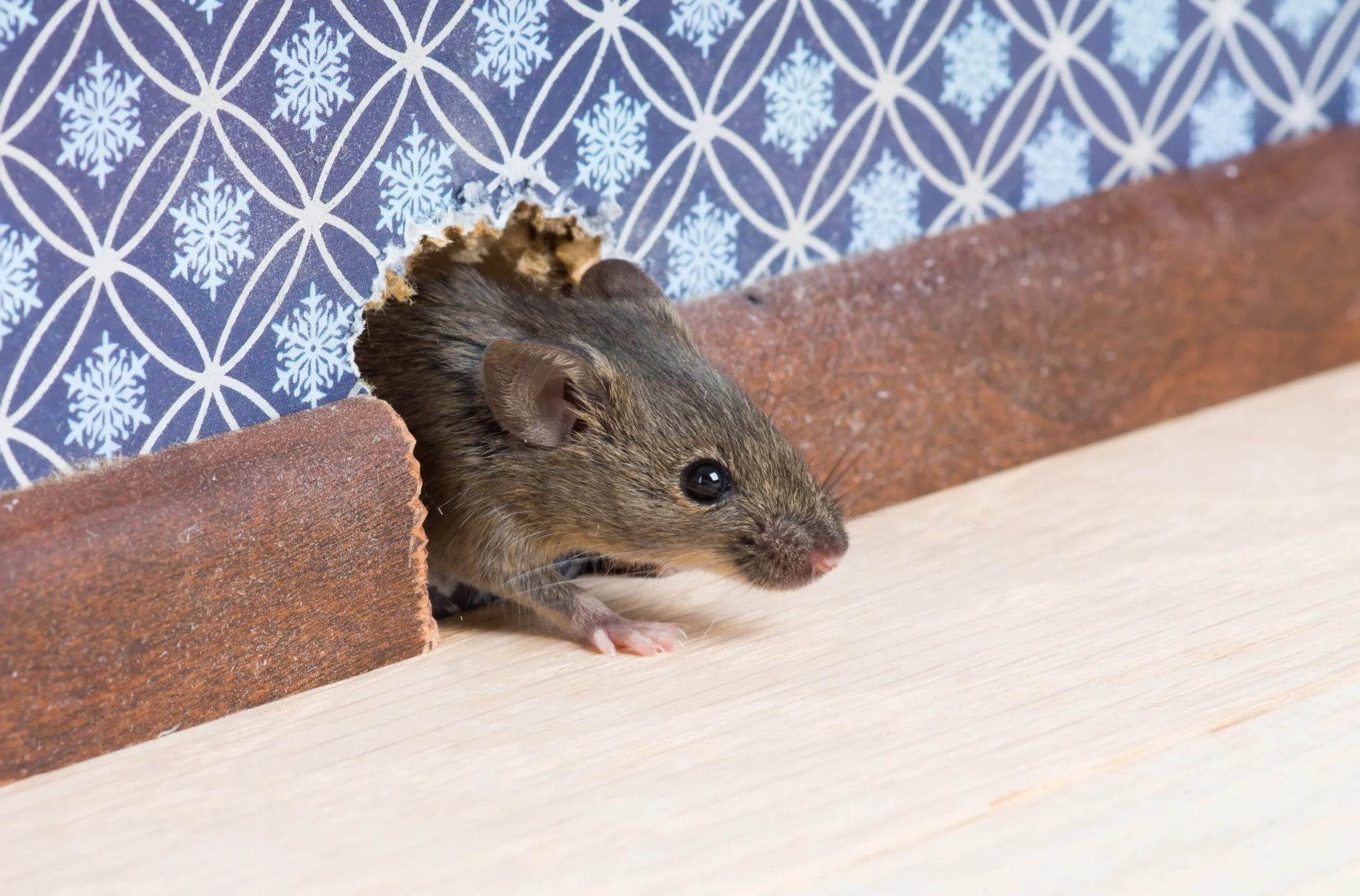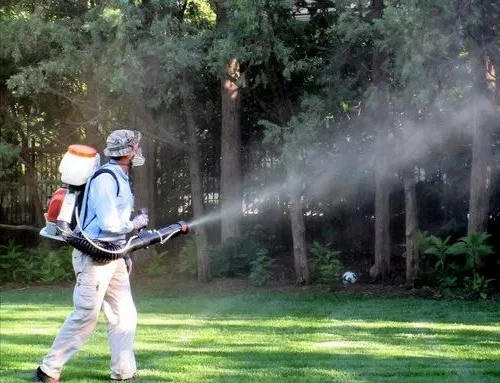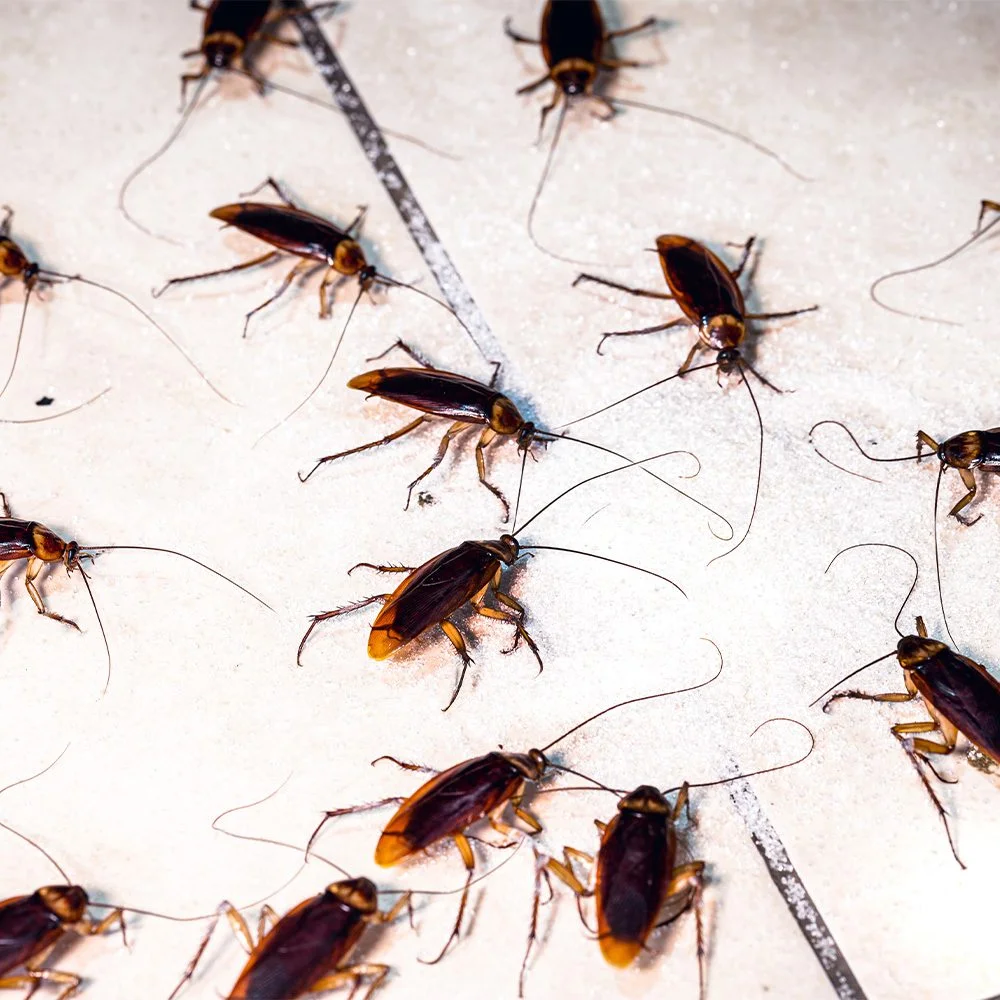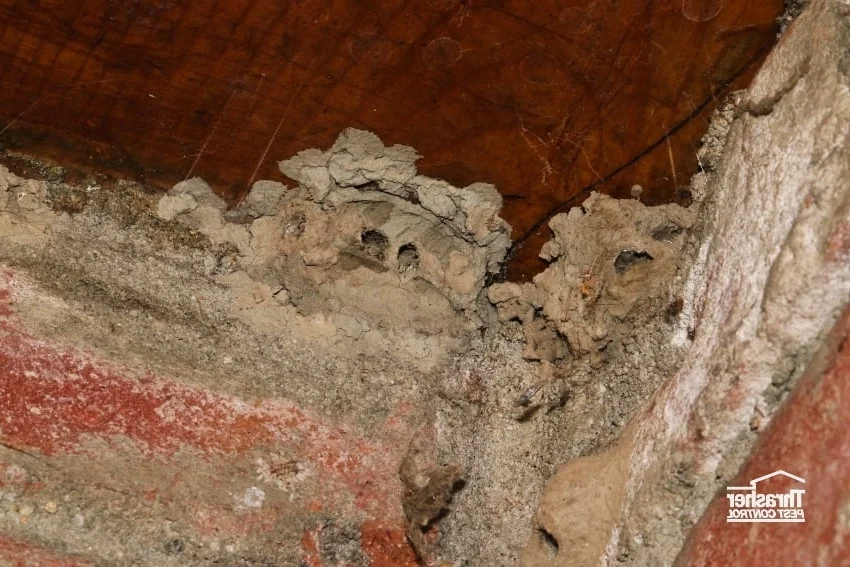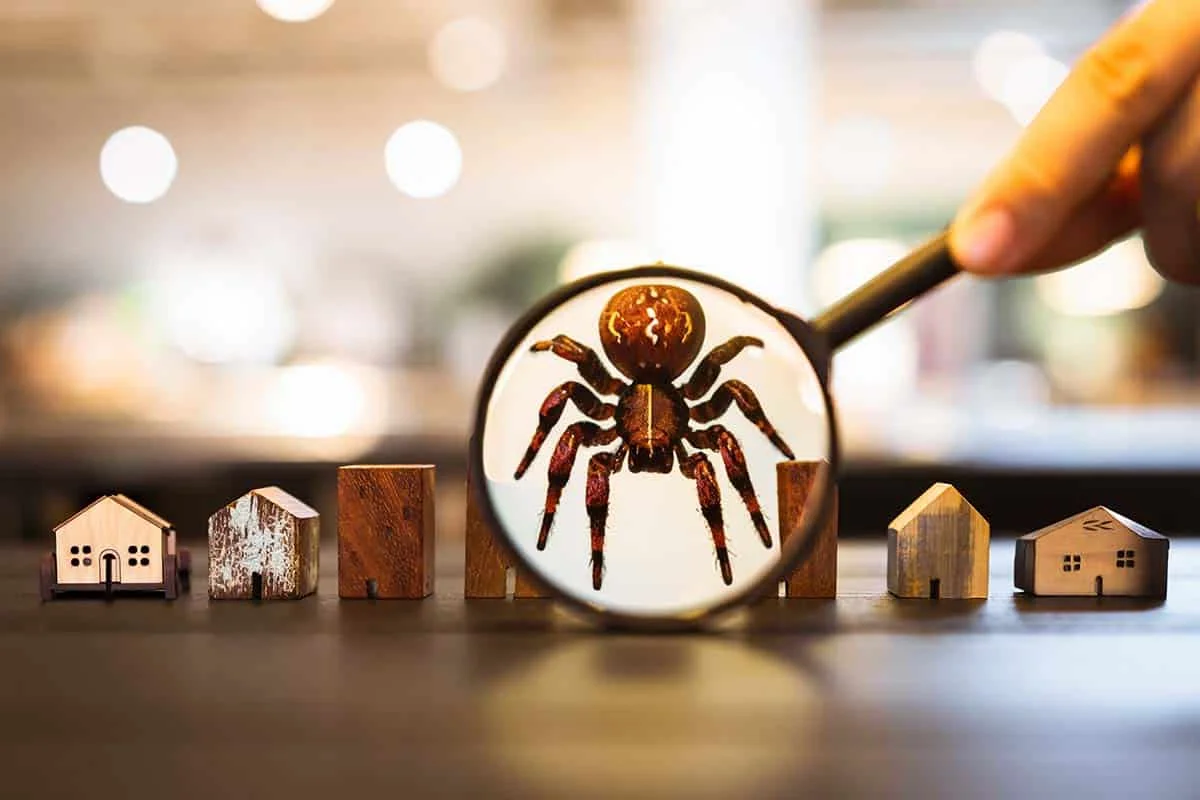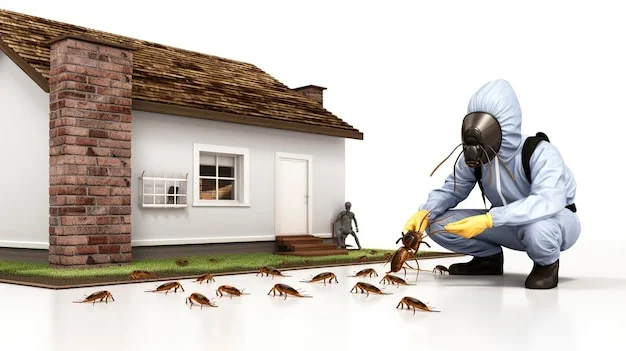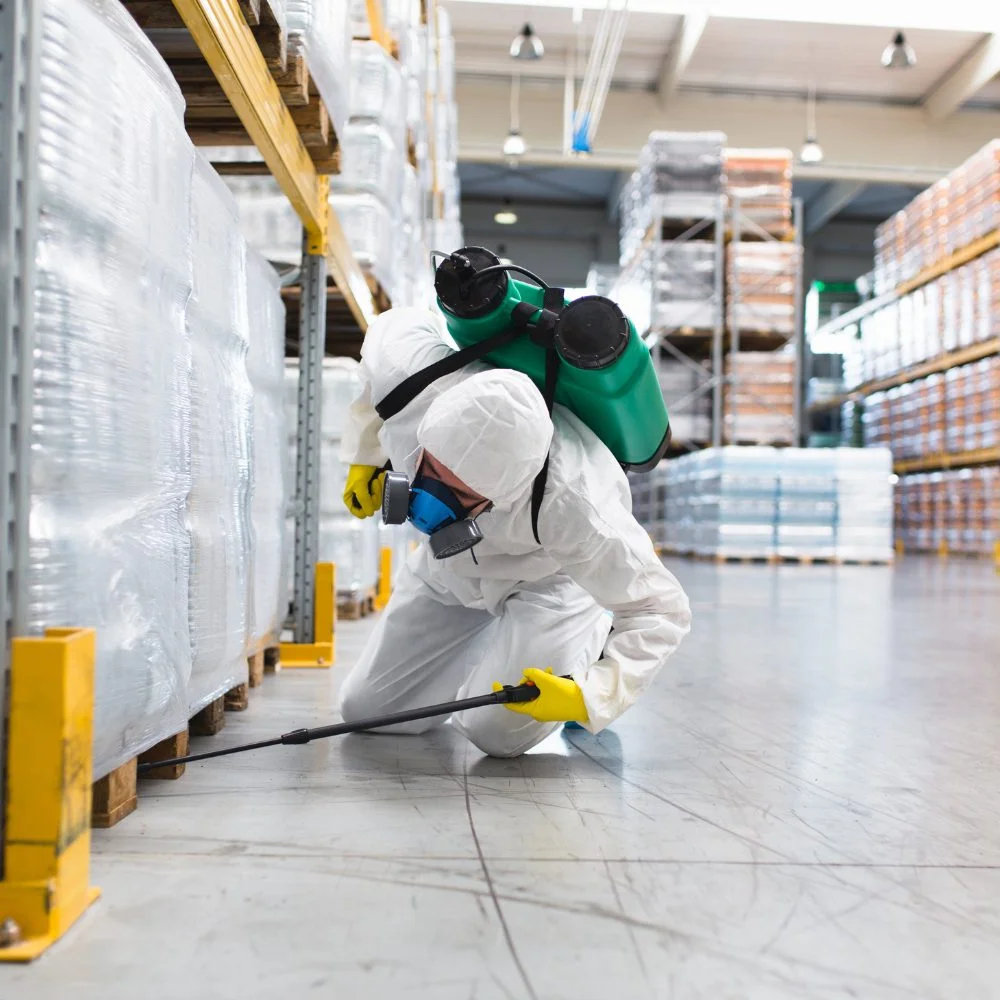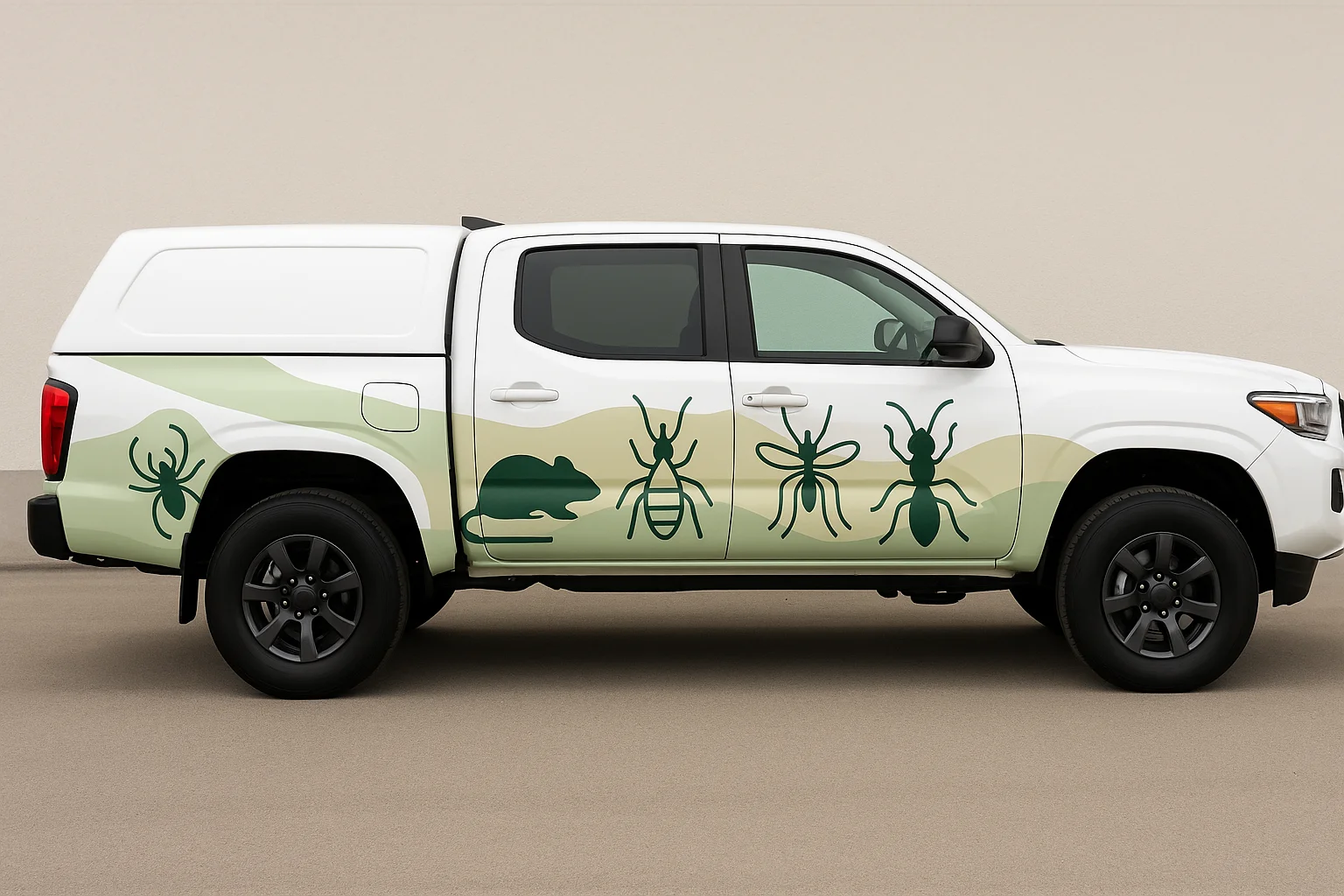City lofts present distinctive pest control challenges that combine
the architectural complexity of converted industrial buildings with the
intense pest pressure of urban environments. These unique living spaces,
often featuring exposed brick, high ceilings, large windows, and open
floor plans, create specific vulnerabilities that require specialized
pest management approaches. From rodents exploiting exposed structural
elements to flying insects attracted to expansive windows, loft pest control
demands innovative strategies that preserve the industrial aesthetic
while maintaining pest-free living environments.
Successful city loft pest management requires understanding both the
original industrial construction and the modern residential conversion
elements that create unique pest entry points and harborage areas.
Professional exterminators who specialize in urban loft environments
can provide effective protection that respects the architectural character
while delivering comprehensive pest prevention. In this guide, we'll
explore proven strategies for protecting city lofts using eco-friendly pest solutions
that work effectively in these distinctive urban living spaces while
preserving their unique industrial charm.
Protecting your unique city loft from urban pest challenges? Our loft
specialists provide emergency pest control
24/7 and comprehensive
residential pest protection designed for converted industrial spaces.
Get specialized loft solutions now!
Unique Pest Control Challenges in City Lofts
City lofts face distinct pest management challenges that result from
their industrial heritage and urban location. Understanding these
unique factors is essential for effective loft pest control:
-
Industrial building legacy Converted warehouses, factories,
and industrial buildings often retain original features like exposed
brick, steel beams, and utility systems that create numerous pest
entry points and harborage areas throughout the structure.
-
Open floor plan vulnerabilities Large, open living spaces
with minimal interior walls provide limited barriers to pest movement,
allowing infestations to spread quickly throughout the entire living
area once pests gain entry.
-
High ceiling accessibility challenges Lofts typically feature
very high ceilings (12-20+ feet) that make inspection and treatment
of upper areas difficult while providing extensive vertical space
for flying insects and climbing pests.
-
Exposed structural elements Visible pipes, ducts, steel beams,
and electrical conduits create numerous pest highways and nesting
sites that are difficult to treat without affecting the industrial
aesthetic that defines loft living.
-
Large window expanses Floor-to-ceiling windows and industrial
window systems provide multiple entry points for flying insects
while creating light attraction that draws urban pest populations
to the living space.
-
Urban arts district locations Many lofts are located in former
industrial areas that may have ongoing construction, artist studios,
restaurants, and nightlife that create continuous urban pest pressure
from surrounding activities.
These factors make specialized pest prevention strategies essential
for city lofts. Successful programs must address the unique architectural
features while managing intense urban pest pressure without compromising
the industrial character that makes loft living distinctive.
Common Pests in City Lofts
Urban loft environments support specific pest populations that exploit
both the industrial building features and urban location advantages.
Understanding these common city loft pests is crucial for developing
effective protection strategies:
Rodents
Professional rodent control in converted industrial loft space
House mice and Norway rats are particularly problematic in city
lofts due to the abundance of exposed structural elements that
provide ideal travel routes and nesting sites. These adaptable
rodents exploit exposed pipes, steel beams, and utility chases
to move throughout the open living space while establishing nests
in insulation, wall cavities, and storage areas.
Rodent control in lofts requires comprehensive approaches
that address the extensive vertical space and numerous structural
features that provide rodent highways throughout the converted
industrial building while maintaining the exposed aesthetic elements
that define loft living.
Flying Insects
Professional flying insect control for loft community
Flying insects including mosquitoes, flies, moths, and various
urban species are attracted to lofts by the large window expanses
and artificial lighting that characterize these spaces. The high
ceilings and open floor plans allow flying insects to establish
populations throughout the entire living area once they gain entry.
Mosquito spray service and comprehensive flying insect
management for lofts must address both exterior attraction factors
and interior space management to prevent flying insects from
exploiting the large, open living areas that define loft environments.
Cockroaches
Targeted cockroach treatment in industrial loft space
German and American cockroaches find ideal conditions in city
lofts, particularly in kitchen areas and utility spaces where
exposed plumbing and industrial features provide numerous harborage
sites. The open floor plans allow cockroaches to spread quickly
throughout the living space once established.
Cockroach extermination in lofts requires specialized
approaches that address the exposed structural elements and open
living spaces while preventing cockroach establishment in the
numerous hiding places created by industrial building features
and modern loft amenities.
Spiders
Various spider species thrive in loft environments, establishing
webs in exposed structural elements, high corners, and industrial
features. While generally beneficial for controlling other insects,
large spider populations can become problematic in living spaces,
especially around exposed beams and architectural features.
Ants
Urban ant species commonly invade lofts through the numerous entry
points created by industrial building features and large window
systems. Carpenter ants can damage exposed wooden elements, while
sugar ants create trails throughout the open living space following
food sources.
Stored Product Pests
Pantry pests like Indian meal moths and flour beetles can establish
populations in kitchen areas and spread throughout the open living
space, particularly affecting food storage areas and exposed pantry
systems common in loft designs.
Urban Wildlife
Pigeons, bats, and other urban wildlife may attempt to roost in
exterior architectural features, fire escapes, and rooftop areas
associated with loft buildings, creating noise and sanitation issues
for residents.
Occasional Invaders
Silverfish, centipedes, and other occasional invaders often enter
lofts through the numerous gaps and openings associated with industrial
building construction, seeking moisture and shelter in utility areas
and storage spaces.
Industrial Building Pest Protection Strategies
Effective loft pest management requires understanding the industrial
building systems and architectural features that create unique
vulnerabilities. Pest control in warehouse and factory
conversion environments demands specialized approaches that address
the original industrial infrastructure while protecting modern
residential amenities.
Professional protection strategies for converted industrial buildings
focus on the building envelope, structural pest highways, and
environmental factors that affect the entire building community
rather than just individual loft units.
Building Envelope Protection
-
Industrial window systems Comprehensive sealing and screening
of large industrial windows, loading dock areas, and architectural
openings that provide multiple pest entry points throughout the
converted building.
-
Structural gap management Professional sealing of gaps around
exposed pipes, conduits, and structural elements while preserving
the industrial aesthetic that defines loft architecture.
-
Rooftop and exterior protection Treatment of rooftop areas,
fire escapes, and exterior architectural features that provide
pest access to the building and individual loft units.
-
Foundation and utility entry control Comprehensive protection
of basement areas, utility connections, and foundation penetrations
that provide ground-level pest access to the converted building.
Structural Pest Highway Management
Industrial buildings feature extensive utility systems, exposed
structural elements, and interconnected spaces that create pest
highways throughout the building. Professional treatment addresses
these pathways while maintaining the architectural features that
residents value.
Community-Wide Coordination
Loft buildings often house multiple units that benefit from coordinated
pest management approaches addressing shared building systems, common
areas, and the industrial infrastructure that connects all residential
units within the converted building.
Open Space and High Ceiling Pest Management
The signature open floor plans and soaring ceilings that define
loft living create unique pest management challenges that require
specialized equipment and techniques. Pest control eaves
and high-ceiling treatment approaches address the vertical space
and accessibility issues that characterize these distinctive living
environments.
Professional management of open loft spaces requires understanding
how pests move through large, unobstructed areas and how to provide
effective treatment and monitoring throughout the vertical space
without compromising the open aesthetic that residents value.
High Ceiling Treatment Strategies
-
Specialized equipment access Professional services use
specialized lifts, extension equipment, and aerial access tools
to reach high ceiling areas, exposed beams, and upper architectural
features for comprehensive treatment and monitoring.
-
Flying insect management Targeted approaches for managing
flying insects that exploit the vertical space, including strategic
placement of monitoring devices and treatment applications at
various height levels throughout the loft.
-
Structural element protection Treatment of exposed beams,
pipes, and architectural features that provide pest harborage
while preserving the industrial aesthetic elements that define
the loft environment.
-
Light and attraction management Strategic approaches to
managing artificial lighting and window treatments that reduce
pest attraction while maintaining the bright, open feel that
characterizes loft living.
Open Floor Plan Considerations
Open living spaces require pest management approaches that prevent
pest establishment without creating visual barriers or compromising
the flowing, unobstructed space that defines loft design. Treatment
strategies focus on perimeter protection and structural element
management.
Vertical Space Monitoring
Comprehensive monitoring systems account for the full vertical space
of loft environments, with strategic placement of detection devices
and monitoring stations at multiple height levels to ensure complete
coverage of the three-dimensional living space.
Urban Arts District Pest Pressure Management
Many city lofts are located in vibrant arts districts and former
industrial areas that create unique urban pest pressure from
surrounding activities. Fast pest control response capabilities
are essential for addressing the continuous pest pressure from
restaurants, galleries, studios, construction projects, and nightlife
that characterize these dynamic urban neighborhoods.
Professional pest management in arts districts requires understanding
the specific urban environmental factors that affect loft communities
while providing responsive service that fits the lifestyle and
schedule patterns of creative professionals and urban residents.
Neighborhood Pest Pressure Factors
-
Restaurant and nightlife proximity Enhanced protection against
pest pressure from nearby dining establishments, bars, and entertainment
venues that generate food waste and attract urban pest populations
to the neighborhood.
-
Construction and renovation activity Specialized protection
during ongoing development projects that disturb established pest
populations and drive them toward residential properties seeking
new harborage opportunities.
-
Artist studio and workspace coordination Consideration of
pest pressure from nearby studios, workshops, and creative spaces
that may involve food, organic materials, or storage conditions
that attract pests to the area.
-
Public space and foot traffic management Protection against
pest pressure from high foot traffic areas, public transportation,
and street-level commercial activity that creates continuous pest
pressure throughout the neighborhood.
Creative District Lifestyle Adaptation
Pest management services adapt to the unique lifestyle patterns
common in arts districts, including irregular schedules, late-night
activity, frequent gatherings, and creative work patterns that may
affect pest control timing and approaches.
Community Coordination
Effective pest management in arts districts often benefits from
coordination with other loft residents, building management, and
local businesses to address shared pest pressure and maintain the
neighborhood standards that support property values and quality of life.
Protect your unique loft lifestyle with specialized urban pest management.
From industrial building protection to open space treatment, our experts
provide comprehensive residential pest protection for city lofts –
schedule your loft assessment today!
Aesthetic-Preserving Pest Control Solutions
Loft residents highly value the industrial aesthetic features
that define their living spaces, requiring pest control approaches
that provide comprehensive protection without compromising the
architectural elements that make loft living distinctive. IPM in garden
and integrated approaches focus on maintaining the visual appeal
while ensuring effective pest management throughout the space.
Professional services for lofts emphasize discrete, aesthetic-preserving
treatment methods that protect the exposed brick, steel beams,
open ductwork, and industrial features that residents specifically
choose when selecting loft living environments.
Discrete Treatment Approaches
-
Hidden placement strategies Strategic placement of monitoring
devices and bait stations in locations that provide effective
pest control while remaining invisible or minimally visible in
the open living space.
-
Architectural integration Treatment methods that work with
rather than against the industrial design elements, using structural
features as treatment advantages rather than obstacles.
-
Color-matched applications When visible treatments are necessary,
professional services use materials and applications that blend
with the industrial color palette and aesthetic of the loft environment.
-
Minimalist intervention Treatment approaches that achieve
maximum pest control effectiveness with minimal visual impact
on the clean, open, industrial aesthetic that defines quality
loft living spaces.
Industrial Feature Preservation
Pest control strategies specifically preserve and work around the
exposed brick walls, steel beam structures, visible ductwork, and
industrial lighting that residents value, ensuring that pest management
enhances rather than detracts from the loft aesthetic.
Open Space Visual Harmony
Treatment approaches maintain the visual flow and unobstructed sight
lines that characterize well-designed loft spaces, ensuring that
pest management elements complement rather than compete with the
architectural and design features that residents specifically seek.
Eco-Friendly Pest Control for Urban Lofts
Urban loft residents often prioritize environmental sustainability
and prefer environmentally friendly pest control approaches
that align with their values and lifestyle choices. Green pest
management strategies work particularly well in loft environments
where the open floor plans and industrial ventilation systems
support natural and sustainable pest control methods.
Eco-friendly pest management for lofts emphasizes prevention,
sustainable practices, and low-impact treatments that maintain
pest-free environments while supporting urban environmental health
and the sustainable living values often embraced by loft communities.
Sustainable Urban Living
Our city loft pest control specialists prioritize environmental
stewardship through sustainable practices, natural treatment methods,
and green approaches that support both pest control effectiveness
and urban environmental responsibility.
Green Loft Pest Management
| Eco-Friendly Method |
Loft Applications |
Environmental Benefits |
| Integrated Pest Management (IPM) |
Comprehensive prevention programs utilizing the industrial
building features for monitoring and natural pest control methods.
|
Minimizes chemical use while maximizing effectiveness;
supports sustainable urban living values.
|
| Physical Exclusion |
Strategic sealing of industrial building gaps and openings
while preserving aesthetic elements and architectural character.
|
Permanent protection with zero environmental impact;
improves building efficiency and sustainability.
|
| Beneficial Insect Programs |
Introduction of beneficial insects in appropriate areas to
naturally control pest populations without chemical applications.
|
Supports natural ecosystem balance and reduces need
for chemical interventions in urban environments.
|
| Botanical Treatments |
Plant-based pest control products that work effectively
in open loft spaces without compromising air quality.
|
Biodegradable, natural treatments that don't contribute
to urban pollution or environmental contamination.
|
| Environmental Modification |
Optimizing lighting, ventilation, and environmental conditions
to reduce pest attraction and support natural prevention.
|
Energy-efficient approaches that improve living conditions
while naturally discouraging pest establishment.
|
Sustainable Loft Practices
Green pest management includes education about sustainable practices,
energy-efficient solutions, and environmental modifications that
enhance pest prevention while supporting the eco-conscious lifestyle
choices often preferred by urban loft residents.
Smart Loft Technology Integration
Modern city lofts often feature cutting-edge technology and smart
home systems that can be integrated with advanced pest monitoring
and management systems. Home pest inspection technologies
adapted for loft environments include digital monitoring networks,
smart sensors, and automated systems that provide real-time pest
activity data throughout the open living space.
Technology integration in loft pest management focuses on seamless
incorporation with existing smart home systems while providing
enhanced protection and early warning capabilities that fit naturally
into the tech-forward lifestyle often embraced by loft residents.
Smart Monitoring Systems
-
Integrated sensor networks Smart pest monitoring devices
that integrate with existing home automation systems to provide
seamless pest activity monitoring throughout the loft space.
-
Mobile app connectivity Real-time pest activity alerts
and monitoring data accessible through smartphone apps that
integrate with other smart home management systems.
-
Environmental monitoring integration Smart sensors that
monitor temperature, humidity, and air quality factors that
influence pest activity while supporting overall loft environmental
management.
-
Automated response capabilities Advanced systems that can
trigger alerts, notifications, and even automated environmental
adjustments based on detected pest activity patterns.
Tech-Forward Lifestyle Integration
Smart pest management systems complement the technology-forward
lifestyle common among loft residents, providing sophisticated
monitoring and control capabilities that fit seamlessly into modern
urban living patterns and expectations.
Data-Driven Optimization
Advanced monitoring provides detailed data about pest patterns,
environmental factors, and treatment effectiveness that enables
continuous optimization of pest management strategies specifically
tailored to individual loft environments and resident preferences.
Creative Professional and Urban Lifestyle Coordination
Many loft residents are creative professionals, freelancers,
and entrepreneurs with flexible schedules and unique lifestyle
patterns that require adaptable pest management approaches.
Professional pest control service for lofts accommodates
irregular schedules, work-from-home requirements, and the creative work environments that often characterize loft living.
Professional services adapt to the unique needs of creative
professionals including home studios, irregular work hours,
client meetings in residential spaces, and the need for pest
control that doesn't disrupt creative work or interfere with
professional activities conducted within the loft environment.
Creative Workspace Protection
-
Home studio pest prevention Specialized protection for
creative work areas including art studios, music rooms, photography
spaces, and other professional areas within the loft that may
contain materials attractive to specific pest species.
-
Equipment and material protection Targeted pest control
for valuable creative equipment, artwork, musical instruments,
and professional materials that could be damaged by pest activity
or infestations.
-
Client-ready environment maintenance Ensuring that loft
spaces remain pest-free and professional when used for client
meetings, creative collaborations, or business activities.
-
Flexible scheduling accommodation Service timing that
accommodates creative work schedules, project deadlines, and
the irregular time patterns common among creative professionals.
Work-From-Home Considerations
Pest management approaches account for the fact that lofts often
serve as both living and working spaces, requiring treatments that
don't disrupt virtual meetings, creative work, or professional
activities that may occur throughout the day.
Creative Community Coordination
Many loft communities include multiple creative professionals who
benefit from coordinated pest management approaches that address
shared building concerns while respecting individual creative work
schedules and professional requirements.
Seasonal Pest Management for City Lofts
Spring (March-May)
- Increased flying insect activity through large windows
- Urban pest emergence from winter hiding spots
- Construction season pest displacement in arts districts
- Spring cleaning and loft organization opportunities
Focus: Window protection and comprehensive
spring pest prevention throughout the open loft space.
Summer (June-August)
- Peak urban pest pressure from neighborhood activities
- Increased cooling system pest infiltration
- Flying insect attraction to large window expanses
- Arts district nightlife pest pressure intensifies
Focus: Enhanced window protection and comprehensive
urban pest pressure management for loft environments.
Fall (September-November)
- Pest migration indoors through industrial building gaps
- Rodent activity increases in wall voids and exposed areas
- Preparation for winter heating season pest movement
- Gallery and studio season pest management needs
Focus: Comprehensive exclusion work and preparation
for winter pest management in industrial building features.
Winter (December-February)
- Concentrated indoor pest activity in heated spaces
- Heating system pest distribution through exposed ducts
- Reduced natural pest pressure from outdoor sources
- Focus on interior loft space pest management
Focus: Interior treatments and monitoring
systems optimized for winter loft living conditions.
Emergency Pest Response for City Lofts
City lofts require specialized emergency response capabilities
that address the unique challenges of open floor plans, high
ceilings, and industrial building features during pest crises.
Urgent pest removal services for lofts include rapid
assessment of the entire open living space, immediate containment
of pest problems, and specialized equipment for accessing high
ceiling areas and exposed structural elements.
Emergency protocols for lofts account for the open floor plan
that can allow pest problems to affect the entire living space
quickly, the professional work activities that may occur in
the space, and the unique access requirements created by industrial
building features and loft design elements.
Specialized Loft Emergency Response
-
Open space rapid assessment Emergency response includes
immediate evaluation of the entire open floor plan to determine
the extent of pest problems and prevent spread throughout the
large, unobstructed living space.
-
High ceiling emergency access Specialized equipment and
techniques for emergency treatment of high ceiling areas, exposed
beams, and upper architectural features that may harbor pest
populations.
-
Industrial building coordination Emergency protocols include
coordination with building management and other loft residents
when pest problems could affect shared industrial building systems
or structural elements.
-
Creative workspace protection Emergency response includes
immediate protection of valuable creative equipment, artwork,
and professional materials that could be damaged by pest activity
or treatment procedures.
Common Loft Emergencies
Typical emergency situations in city lofts include wasp or bee
colonies in high ceiling areas, rodent infestations spreading
rapidly through exposed structural elements, flying insect swarms
entering through large window systems, and any pest situation
that threatens creative work or professional activities conducted
within the loft space.
Arts District Emergency Coordination
Emergency response includes coordination with neighborhood businesses,
other creative professionals, and building management to address
pest problems that may affect the broader arts district community
or stem from neighborhood pest pressure sources.
Protecting Loft Property Values and Investment
City lofts represent significant investments in competitive urban
real estate markets where property values depend heavily on
condition, aesthetic preservation, and maintenance standards.
Professional pest control truck services and comprehensive
pest management help protect these investments by preventing
pest damage to industrial features and maintaining the pristine
conditions that support strong market values.
Pest management documentation and preventive maintenance records
provide valuable support during property sales, refinancing,
and insurance evaluations while demonstrating responsible stewardship
of the unique architectural features that define loft value
and marketability.
Investment Protection Strategies
-
Architectural feature preservation Pest management that
protects exposed brick, steel beams, industrial fixtures, and
other character-defining elements that contribute significantly
to loft property values and market appeal.
-
Premium market positioning Well-maintained, pest-free
lofts command premium prices in competitive urban markets where
buyers expect exceptional condition and unique architectural
features to be properly preserved.
-
Documentation for sales Professional pest management records
provide reassurance to potential buyers and support property
values during sales processes in high-end urban real estate markets.
-
Long-term maintenance support Preventive pest management
protects against costly damage to irreplaceable industrial features
and architectural elements that would be expensive or impossible
to restore or replace.
Market Differentiation
Professional pest management helps lofts maintain competitive
advantages in crowded urban real estate markets by ensuring that
unique architectural features remain in pristine condition and
that properties meet the high standards expected by discerning
urban buyers.
Insurance and Liability Protection
Comprehensive pest management documentation may help reduce insurance
costs and provides protection against claims related to pest damage
or negligent maintenance of valuable industrial architectural features
and building systems.
Loft Community and Building Management Coordination
City lofts often exist within converted industrial buildings that
house multiple residential units and may include commercial spaces,
requiring coordinated pest management approaches that address shared
building systems and community-wide pest pressure while respecting
individual loft owner needs and preferences.
Building-Wide Coordination
-
Shared system management Coordinated pest control for
shared industrial building systems including exposed utilities,
common areas, and structural elements that connect multiple
loft units throughout the converted building.
-
Community pest pressure reduction Building-wide approaches
that reduce overall pest pressure affecting all residents through
comprehensive exterior protection and common area management.
-
Commercial space coordination When loft buildings include
commercial spaces, coordinated pest management ensures that
commercial activities don't create pest pressure that affects
residential loft units.
-
Historic building preservation Pest management approaches
that protect historic industrial building features while meeting
modern residential pest control needs throughout the converted
structure.
Resident Community Benefits
Coordinated building-wide pest management often provides cost efficiencies
and more effective pest control than individual unit approaches
while maintaining the community standards that protect property
values and resident satisfaction throughout the loft community.
Management Company Coordination
Professional services work closely with building management companies
and condo associations to develop pest management policies and
procedures that address both individual unit needs and community-wide
pest prevention goals.
City Loft Success Stories
"PestControl100 solved our flying insect problem that was affecting
our entire open loft space. Their approach preserved all the
industrial features we love while creating a completely pest-free
environment for our home studio and living area."
- Maya and James R., Graphic Designers
★★★★★
"The rodent issue in our high-ceiling loft required specialized
equipment to reach all the exposed beams and structural elements.
Their expertise with loft environments made all the difference
in solving the problem permanently."
- Alex T., Photographer
★★★★★
"As creative professionals working from our loft, we needed pest
control that wouldn't disrupt our client meetings or damage our
equipment. The discrete, professional service was exactly what
we needed for our urban lifestyle."
- Sarah and David L., Architects
★★★★★
Frequently Asked Questions
How does pest control work differently in lofts compared to traditional apartments?
Loft pest control faces unique challenges including open floor
plans that allow pests to spread quickly throughout the entire
living space, high ceilings requiring specialized equipment
for access, exposed structural elements that provide numerous
pest harborage sites, and large window systems that create
multiple entry points. Treatment strategies must address the
entire three-dimensional space while preserving the industrial
aesthetic features that define loft living.
Will pest control treatments affect the industrial aesthetic of my loft?
Professional loft pest control services specialize in aesthetic-preserving
treatment methods that protect exposed brick, steel beams,
and industrial features while providing comprehensive pest
management. Treatments are designed to be discrete and work
with rather than against the architectural elements that residents
value. Strategic placement and color-matched materials ensure
that pest control enhances rather than detracts from the loft
aesthetic.
How do you treat pests in areas with very high ceilings and exposed beams?
High ceiling pest control requires specialized equipment including
aerial lifts, extension tools, and specialized application
devices that can reach exposed beams, upper architectural features,
and ceiling areas up to 20+ feet high. Professional services
use strategic monitoring placement at multiple height levels
and targeted treatments that address the full vertical space
while ensuring comprehensive coverage throughout the loft environment.
Are eco-friendly pest control methods effective in converted industrial buildings?
Yes, eco-friendly methods are highly effective in loft environments
when properly implemented. The open floor plans and industrial
ventilation systems actually support many natural pest control
methods. Physical exclusion, beneficial insect programs, botanical
treatments, and environmental modifications work particularly
well in loft settings while aligning with the sustainable
values often embraced by loft residents and supporting urban
environmental responsibility.
How does urban arts district location affect pest pressure in lofts?
Arts district locations typically create increased pest pressure
from nearby restaurants, galleries, studios, construction projects,
and nightlife activities that generate food waste and attract
urban pest populations. Lofts in these areas require enhanced
protection and more frequent monitoring to address the continuous
pest pressure from surrounding neighborhood activities. Professional
services adapt to these unique urban environmental factors
while providing responsive pest management that fits the creative
lifestyle common in arts districts.
Don't let pests compromise your unique loft lifestyle. Trust PestControl100
for specialized city loft pest control that preserves your
industrial aesthetic while providing complete protection –
contact us today for expert loft solutions!

